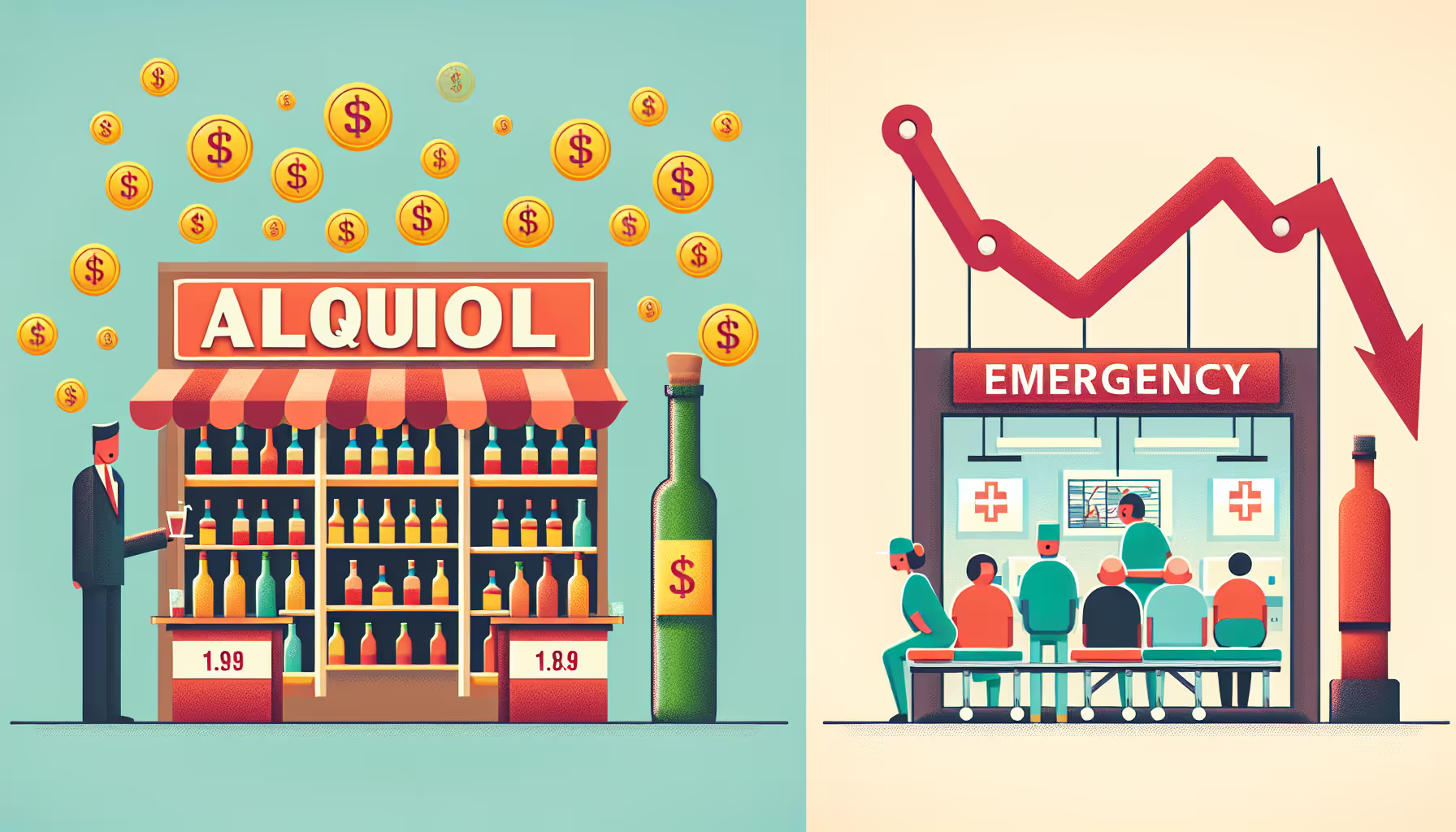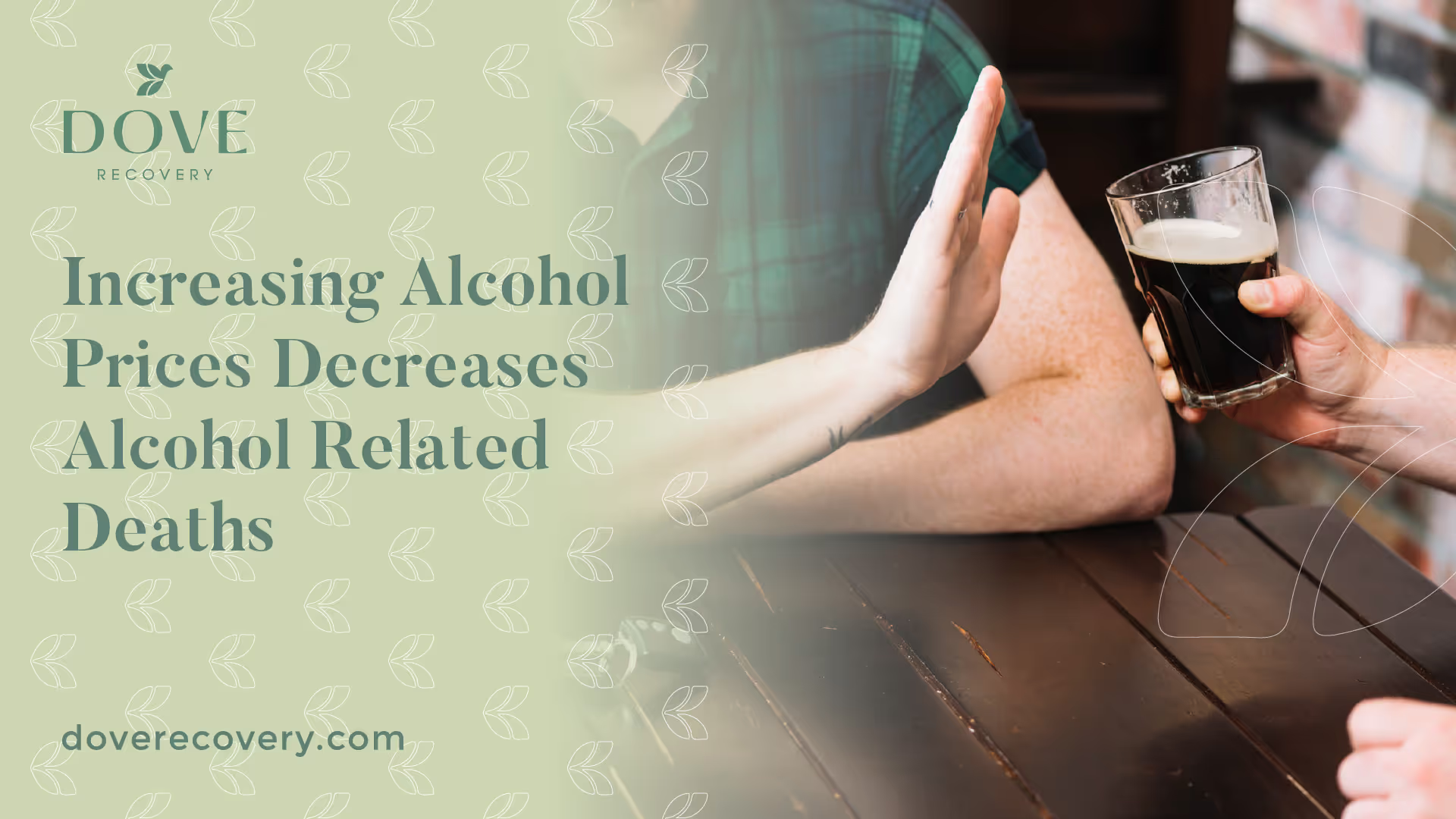Increasing Alcohol Prices Decreases Alcohol Related Deaths

Impact of Alcohol Prices
Investigating the influence of alcohol prices is an important facet in understanding alcohol consumption patterns and related harm. The prices of alcoholic beverages can significantly impact the rates of alcohol-related issues, from health risks to societal implications.
Alcohol Prices and Harm Reduction
Increasing alcohol prices is recognized as a highly cost-effective intervention to reduce alcohol-related harm. This approach, which involves excise taxes and pricing policies, is part of the SAFER initiative launched by the World Health Organization (WHO) in collaboration with international partners in 2018.

Studies have found that elevating the price of alcohol can lead to a decline in alcohol consumption and its adverse consequences. These include drinking and driving, diseases, injuries, and deaths linked to alcohol use and abuse, as well as alcohol-related violence and crime [2].
Minimum Unit Pricing Effects
Minimum Unit Pricing (MUP) for alcohol has been employed as a strategy in certain regions to reduce alcohol-related harm. A prominent example is Scotland, where the introduction of MUP led to a significant reduction in alcohol-related deaths. The estimated decrease was by 112 deaths per 100,000 individuals in the first two years following the policy implementation (The Lancet).
A controlled interrupted time series study was conducted in Scotland to assess the impact of alcohol minimum unit pricing on deaths and hospitalizations. The results indicated a potential relationship between increasing alcohol prices and decreased alcohol-related harm (The Lancet).
The above evidence suggests that strategic pricing measures, including MUP, can be an effective tool in mitigating the negative impacts of alcohol use. As such, the discussion surrounding increasing alcohol prices and decreasing alcohol-related deaths continues to be of high relevance in public health discourse.
Relationship Between Prices and Consumption
Understanding the relationship between prices and alcohol consumption is important in shedding light on how increasing alcohol prices decreases alcohol-related deaths. This relationship is explored through the concepts of price elasticity of alcohol demand and the impact of price increases on alcohol use.
Price Elasticity of Alcohol Demand
Price elasticity of alcohol demand is an economic concept that describes how sensitive the demand for alcohol is to changes in its price. According to economic theory, the demand curve for any product, including alcohol, is downward sloping, meaning that as the price of a product rises, the quantity demanded of that product falls.
This implies that an increase in the price of alcohol can lead to a decrease in alcohol consumption. Various studies have consistently demonstrated that price increases for alcoholic beverages lead to reduced alcohol consumption in the general population and in certain high-risk populations, such as heavier drinkers or adolescents and young adults. These effects are more pronounced in the long run than in the short run.
Price Increases and Alcohol Use
Price increases not only affect the quantity of alcohol consumed but also its adverse consequences, such as drinking and driving, diseases, injuries, and deaths related to alcohol use and abuse, and alcohol-related violence and crime.
Furthermore, studies have found that adolescents and youth are more responsive to changes in prices than the general population, suggesting that raising prices of alcoholic beverages can have a greater impact on reducing alcohol use and abuse among this population [3].
In summary, the relationship between alcohol prices and consumption supports the argument that increasing alcohol prices can lead to a reduction in alcohol-related deaths. Higher prices lead to reduced alcohol use and abuse, and consequently, a decrease in the adverse health and social consequences associated with excessive alcohol consumption.
Public Health Benefits
Higher alcohol pricing can lead to substantial public health benefits, including a reduction in alcohol-related deaths and crime. This section delves into these two significant benefits.
Reduction in Alcohol-Related Deaths
One of the most impactful effects of increasing alcohol prices is the potential reduction in alcohol-related deaths. A prime example of this can be seen in Scotland, where the implementation of minimum unit pricing for alcohol led to a significant decrease in such deaths. In the first two years following the introduction of this policy, there was an estimated reduction of 112 deaths per 100,000 individuals (The Lancet).
In addition to this, numerous studies show that price hikes can reduce alcohol consumption and its adverse consequences, which include diseases, injuries, and deaths related to alcohol use and abuse [2].
Impact on Alcohol-Related Crimes
Beyond the reduction in the direct health impact of alcohol consumption, increased alcohol prices can also help curb alcohol-related crimes. Research has shown that higher prices of alcoholic beverages are negatively associated with adverse consequences such as drinking and driving, crimes, liver cirrhosis and other alcohol-related mortality, risky sexual behavior, and poor school performance among youth.
Moreover, increases in the monetary price of alcohol, achieved through tax increases, can significantly reduce drinking and heavy drinking among youth and young adults. This, in turn, can lead to a decrease in alcohol-related crimes committed by this demographic [2].
In summary, the public health benefits of increasing alcohol prices are significant and multifaceted. Not only can such measures help decrease alcohol-related deaths, but they can also contribute to a decrease in crimes related to alcohol consumption. As such, these findings highlight the potential of pricing policies in addressing public health issues associated with alcohol use.
Tax Policies and Alcohol Consumption
Tax policies can play a central role in the efforts to reduce the adverse effects of alcohol consumption. This section delves into the use of excise taxes and pricing policies, and how these measures are considered cost-effective interventions in mitigating alcohol-related harm.
Excise Taxes and Pricing Policies
One of the strategies utilized to decrease alcohol-related harm is the implementation of excise taxes and pricing policies on alcoholic beverages. Studies have found that increases in the price of alcohol can reduce alcohol consumption and its adverse consequences, such as drinking and driving, diseases, injuries, and deaths related to alcohol use and abuse, and alcohol-related violence and crime.
Furthermore, excise taxes have been shown to significantly reduce drinking and heavy drinking among youth and young adults. However, alcohol excise taxes are currently below the optimal level needed to address the external costs of alcohol use. This suggests that raising alcohol taxes could serve as a cost-effective way to reduce harm and promote public health.
Cost-Effective Interventions
Increasing alcohol prices through excise taxes and pricing policies is recognized as one of the 5 most cost-effective interventions to reduce alcohol-related harm. This approach is part of the SAFER initiative launched by the World Health Organization (WHO) in collaboration with international partners in 2018.
As the evidence suggests, increases in the prices of alcoholic beverages can lead to reductions in the frequency of diseases, injuries, and deaths related to alcohol use and abuse [2]. The monetary cost associated with alcohol consumption acts as a deterrent, discouraging excessive and harmful drinking habits.
These interventions are not only effective in reducing the detrimental effects of alcohol consumption on individuals and society, but they are also cost-efficient. This demonstrates the value and potential of incorporating tax policies and pricing strategies in the broader effort to mitigate the impact of alcohol consumption on public health.
Alcohol Prices and Social Behavior
Investigating the effects of alcohol prices on social behavior extends the conversation beyond consumption habits and public health. It reveals how price influences can permeate into societal issues such as violent acts and child abuse.
Reduction in Violent Acts
Higher alcohol prices have a significant association with a reduction in violent acts. This includes severe crimes such as homicides, assaults, rapes, and burglaries. It also extends to reductions in violent acts on college campuses, including physical fights, injuries, property damage, and even the use of force by police. For instance, as per the NCBI, a 10% increase in the price of alcohol would lead to considerable reductions in violent acts on college campuses:
This data underscores the potential of increased alcohol prices in mitigating violence, thus contributing to safer and more peaceful communities.
Effects on Child Abuse
The influence of alcohol prices also extends to a critical social issue: child abuse. As per the same NCBI study, increased alcohol prices can potentially reduce the incidence of child abuse, including severe child abuse committed by women.
The study found that a 10% increase in the excise tax on beer was estimated to reduce the probability of overall child abuse and severe child abuse by 1.2% and 2.3% respectively:
These findings present a compelling case for considering alcohol pricing policies not just in the context of public health, but also as a mechanism to address critical societal issues. It further emphasizes the potential of increasing alcohol prices as a measure to decrease alcohol-related deaths and violence.
Health Benefits of Moderate Drinking
While the primary focus has been on how increasing alcohol prices can decrease alcohol-related deaths, it's also important to highlight the potential health benefits associated with moderate alcohol consumption. Particularly, the potential cardiovascular benefits and the health advantages associated with wine consumption.
Cardiovascular Benefits
Scientific studies have noted that moderate drinkers often have lower rates of cardiovascular disease (CVD) compared to heavy drinkers or non-drinkers [4]. This suggests that alcohol, specifically ethanol, in moderate amounts, could potentially have cardioprotective properties.
A change in alcohol intake over a 5-year period showed an increased risk of cardiovascular disease among those who decreased their consumption, and a decreased risk among abstainers who increased their intake of alcohol [4]. This indicates that the effect of alcohol on cardiovascular health seems relatively short-term and acute when CVD is the outcome.
Interestingly, drinking alcohol more frequently is associated with a lower risk of developing CVD in men, independent of the amount of intake. This association is less convincing for women, suggesting that sex-specific drinking habits could contribute to the greater risk reduction seen in men who drink frequently, such as drinking with meals.
Wine Consumption and Health
When discussing the health benefits of moderate drinking, wine, in particular, often takes center stage. Some epidemiological studies have suggested that wine drinkers have a lower incidence of CVD than drinkers of other types of alcohol. Wine contains several components that may contribute to a possible antithrombotic and anticarcinogenic effect [4].
However, these differences in health effects may be explained by true differences or confounding factors. Differences in drinking patterns, cognitive function, socioeconomic status, subjective health, and dietary habits have been associated with intake of different types of beverages [4].
Interestingly, wine buyers tend to buy more olives, fruits, vegetables, poultry, cooking oil, and low-fat products than beer buyers. This suggests that wine buyers are more likely to purchase food items consistent with the Mediterranean diet, which is known for its health benefits [4].
In conclusion, while the link between alcohol prices and alcohol-related deaths is a critical public health discussion, the potential health benefits of moderate alcohol consumption, particularly wine, should not be overlooked. However, it's crucial to remember that these benefits are associated with moderate consumption and should not be used to justify excessive drinking.
References
[1]: https://www.who.int/initiatives/SAFER/pricing-policies
[2]: https://www.ncbi.nlm.nih.gov/pmc/articles/PMC6683806/
[3]: https://www.ncbi.nlm.nih.gov/pmc/articles/PMC3860576/
[4]: https://www.sciencedirect.com/science/article/abs/pii/S1047279707000063
[5]: https://academic.oup.com/alcalc/article/50/6/631/192949
